Prepared by Molly Spratt for Pink Granite.
J A N U A R Y 8 , 2 0 1 8
The key to this industry, in my opinion, is organization. If you’re unorganized, there’s no possible to way to keep track of your deadlines, scheduled meetings, walk-in meetings, hallway encounters, musings, and last-minute passing comments your boss gives you as s/he hurries out the door. In my case, my boss files approximately forty bills, runs a committee, and has a large staff. It’s a lot of balls to keep in the air at once. The way that I make it happen is by using my bullet journal.
“The key to this industry, in my opinion, is organization.”
If you haven’t heard of bullet journaling, buckle up. It’s about to change your world. I encourage you to watch this video (via bulletjournal.com) and come back to this post.
.
.
.
Called the “Analog System of the Digital Age,” this handwritten system can be modified in any way that the user sees fit. For me, I started out with the traditional system described in the video above, but I found out quickly that it had features that I didn’t want, and it lacked a system of keeping my notes from meetings organized. Below I will detail my system, and how I use it specifically for the legislative world.
What kind of notebook do I need to get started?
First and foremost, I use a Leuchtturm1917 dotted planner. While there are blank page and lined options of this hardcover journal, I discovered that the dotted work best for me. This is mostly because I write really small, so any lined paper is difficult for me to use. I tried the blank pages, and I needed a bit of guidance, so my notes didn’t end up messy and crooked. The dots keep things organized, evenly spaced, and clean. The perfectionist in me loves them. Another great thing about this journal is that it’s also paginated, which means if I take particularly important notes about something on a random Tuesday, I can jot down the page number in the table of contents and quickly refer back.
That being said, the great thing about this system is you don’t have to have a fancy journal to use. You can use a legal pad, a normal notebook, a binder…. really anything that you have access to on a daily basis. That’s the beauty of the customization of the system.
“… the great thing about this system is you don’t have to have a fancy journal to use.”
My journaling system contains only five components.
- My Year At-A-Glance
- Monthly Layouts (for each month)
- Weekly Layouts (for each week)
- Daily Notes with Key
That’s it.
My Year At-A-Glance
At the beginning of each year, I create a gigantic grid for four months (three times). It’s pretty self-explanatory when you see it. Here, I put all the things that will be occurring that month that will need to be transferred to the Monthly Layout when that month rolls around. (This is also the place I put birthdays, so that I will remember to pass them along to the next year.) Now, mine doesn’t contain absolutely everything I have to do, because once I’m in that month, I focus on the monthly layout. However, once I schedule something for the next month. It goes here.
Monthly Layout
I’ve been through a few iterations of a monthly layout, and I have finally settled on a method that works for me. This is my current sytem. I’ll be walking you through how I detailed my first week in May 2017.
As you can see, on the left-hand page, I’ve got my monthly calendar. This is what my month will look like day-to-day. During the Interim, I have both “personal” and “professional” columns, to keep up with everything. Sadly, during session, the personal column will disappear. On the right page, I’ve got a quick reference calendar with a key, work notes, reminders for next month, and personal notes.
“Sadly, during session, the personal column will disappeaR.”
These two pages are where I put my monthly deadlines (or important reminders for the next month), and general notes to discuss with my boss. Usually following my monthly lay out, I’ll leave two blank pages. Some months I’ll use them; some months, I won’t. These blank pages are where I put various lists/tasks that don’t fit in the weekly layout. For example, during the interim, I keep a list of my bill ideas on one of these pages, and during the holidays, I keep a scratch page for gift ideas.
I check my Monthly layout first thing in the morning to make sure I’ve got my deadlines for the day put on my weekly layout and daily notes. See below:
Here’s my Monday, May 1 – Sunday, May 7 weekly calendar.
For my weekly layout, I leave enough space to list my items/deadlines for each day. I also use a habit tracker to make sure I’m taking care of myself. You can use this in a bunch of different ways, but mine is simple. I go for the basics during session: water, rest, me time, flossing, and making sure I take note of the good days. I also have a spot for weekly deadlines that don’t have a specific due date, but need to be done by the end of the week. Below, I keep an outline of the upcoming week so that I keep next week in mind when I prioritize my tasks for the week.
As you can see, I’ve taken the bill deadline and other items listed from my monthly layout and made sure they made it to my weekly layout. This page also serves as a quick reference guide, so that a few weeks down the line, I can refer to the weekly pages to jog my memory of what happened and when. It kind of serves as a table of contents for the following pages.
Before I show you what a week, day-by-day in my life looks like during session, I need to explain my key to you. While different people use different symbols for different items, I’ve got only three symbols that I use in my daily notes.
□: task
∆: scheduling
– : note
Additionally, for the task symbol, I utilize arrows and Xs. If I complete the task, I fill the box with an X. At the end of the day, if a task remains uncompleted, I leave it blank. The next morning, I review the day before, and any blank tasks get filled with an arrow and subsequently listed as a task for the next day.
I also am sure to differentiate the “general notes” from my meetings (scheduled or otherwise). For me, I write the lobbyist, stakeholder, or organization that’s visiting me, in ALL CAPS with plenty of spacing. It’s distinct enough from my tiny handwriting to clearly stick out to me when I’m referring back.
Please understand that some of the information in the photos has been redacted for confidentiality’s sake.
On Monday, May 1, you’ll see that I populated tasks that needed to be completed that day (from my weekly layout), and I even added some reminders of big deadlines for the next day. Because it was a Monday (the day before our scheduled Pub. Ed hearing), I had several stakeholders stop by to discuss support/opposition for various bills set to be heard. You can see those meetings outlined clearly and distinctly.
I also want to be sure to note that my day is outlined not by category, but chronologically. That way I can recall, “oh someone stopped by yesterday morning to discuss a bill,” and sure enough, they’ll be first on the list. It’s constant reinforcement. If tasks come up midday, I don’t worry about putting them with my other ones. I’ll get to it when I can, and if I don’t, I’ll be able to bump it to tomorrow.
The tasks not completed on May 1, were bumped to May 2, and so on.
On Tuesday, you’ll see that I used a red pen to outline a task with an urgent deadline, and to write some important notes.
On Thursday, I had several scheduled meetings (from my weekly layout), and you can see that they are all there, under the Thursday, May 4, 2017 title. One of the great things about the weekly layout coupled with my daily notes, is that I have the ability to put these scheduled meetings on my Outlook Calendar, which allows me to digitally search my journal. That way, when I’m prepping for an upcoming meeting, I can digitally search my Outlook Calendar if I don’t remember exactly when something was, and I can easily find it.
Now, I know what you’re thinking. This is a lot. While it sounds like a lot to explain, once you get the hang of it, and adapt your process to one that works for you. It comes as second nature. I promise that once you start bullet journaling, you’ll think clearer, and you won’t worry about the thousand things you have to do.
A big thank you to Molly for not only taking the time to share her process for bullet journaling during the Texas Legislative session but also for opening up the actual pages of her journal for this post. This new year and this interim I’m constantly seeking ways to learn from others who have really mastered the skill of organization and am eager to share the information with all of you.
As Molly mentions, you can use any paper you have handy to start bullet journaling. However, as a thank you to Pink Granite readers this month – I’ll be giving away the same journal that Molly uses to one lucky reader. To throw your name in the proverbial hat, please comment on this post and I’ll choose a winner on February 1st. Please comment no later than midnight CST on January 31st. For an additional entry follow Pink Granite on Instagram @PinkGraniteTX or on Facebook and comment on the drawing post there as well.
ENTER OUR GIVEAWAY!
Thank you for entering!
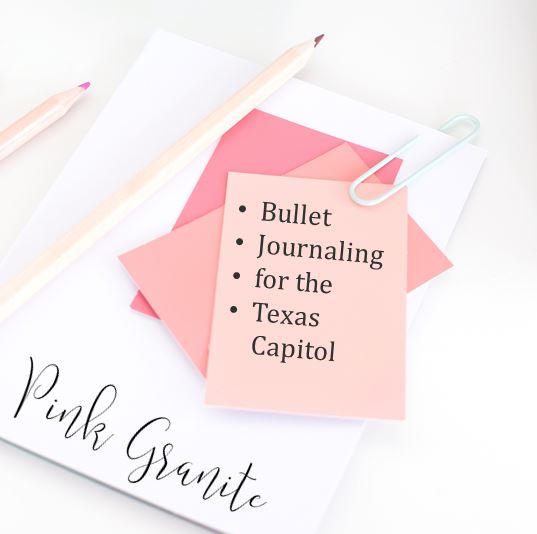
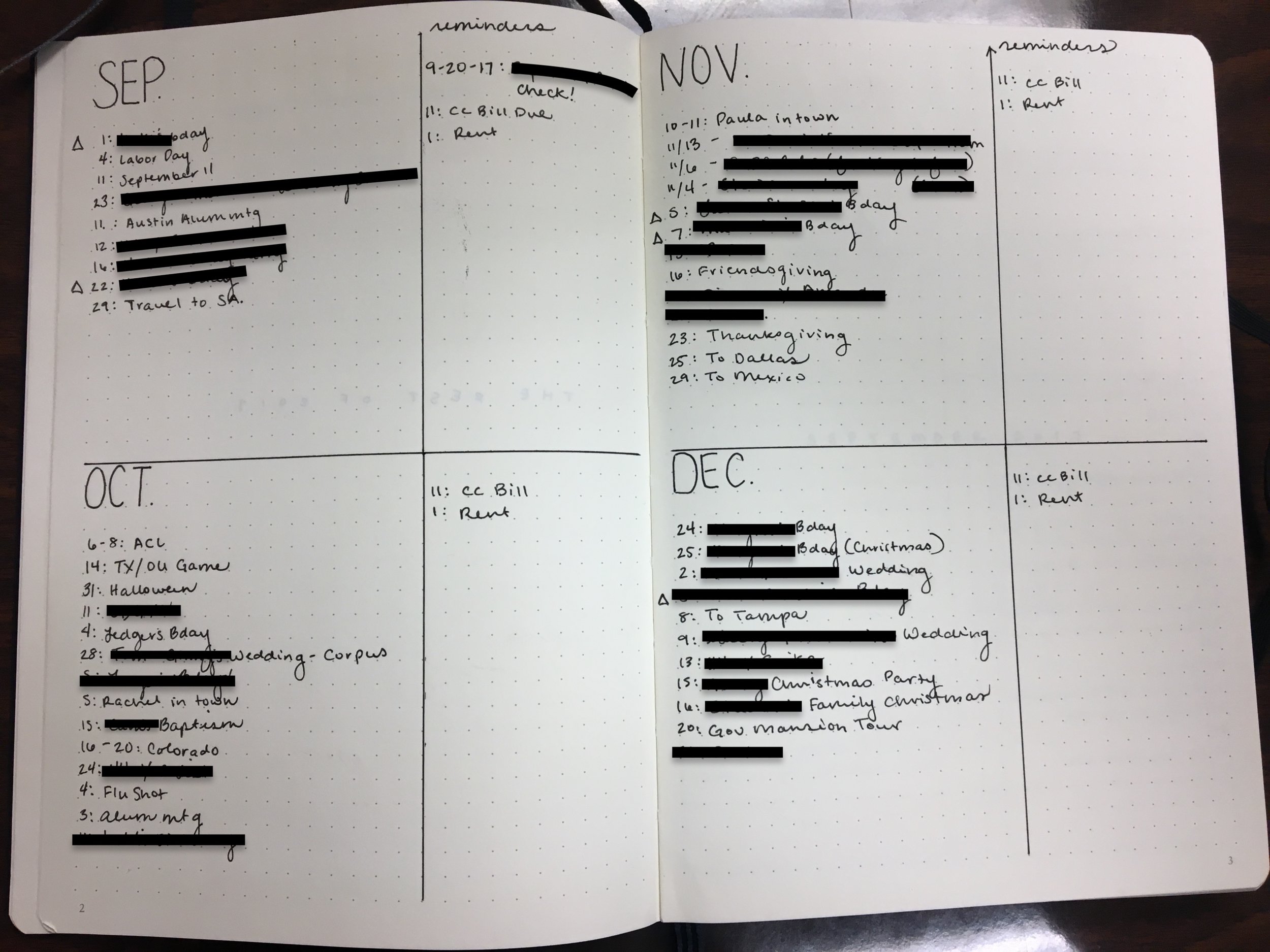
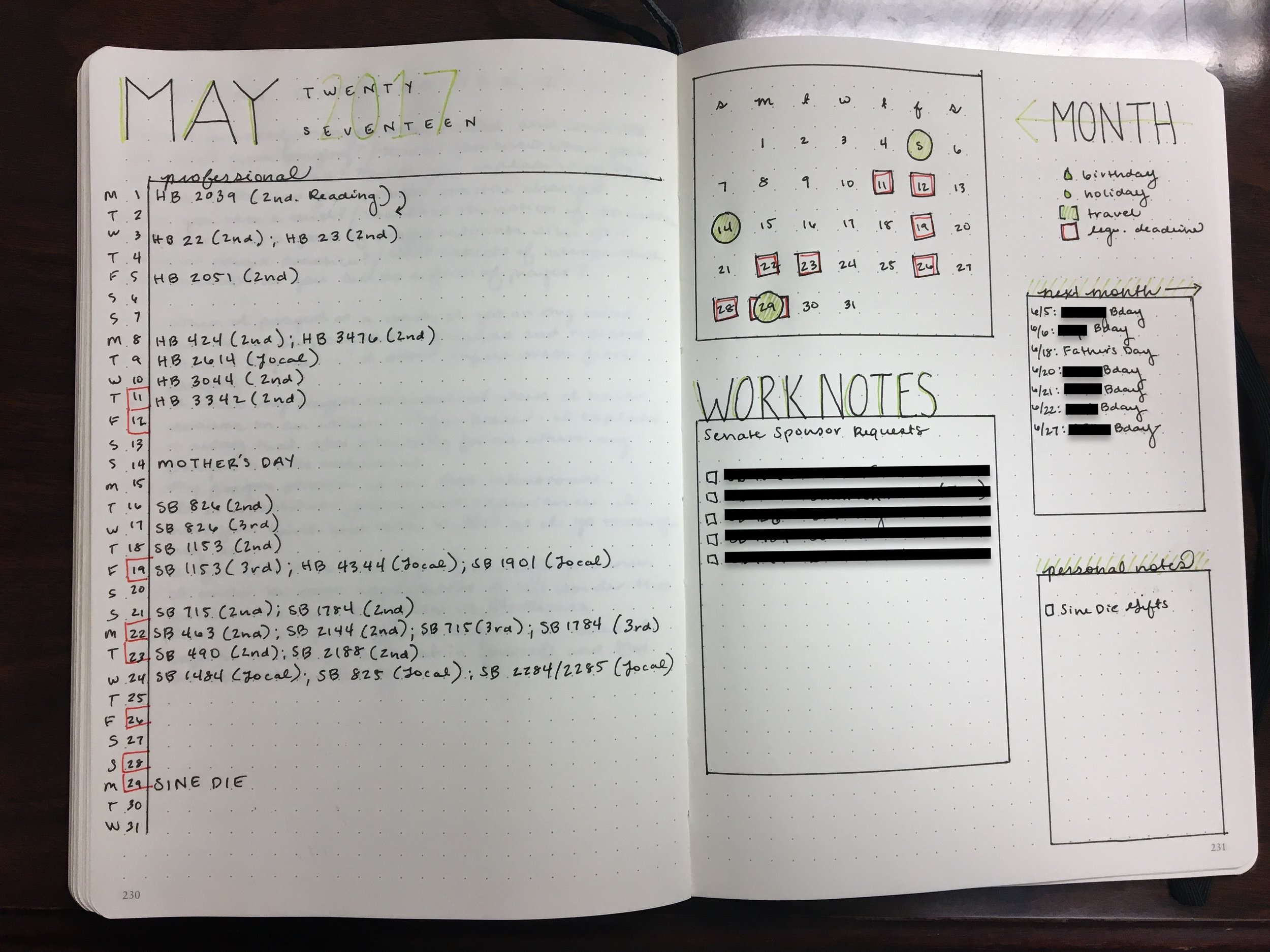
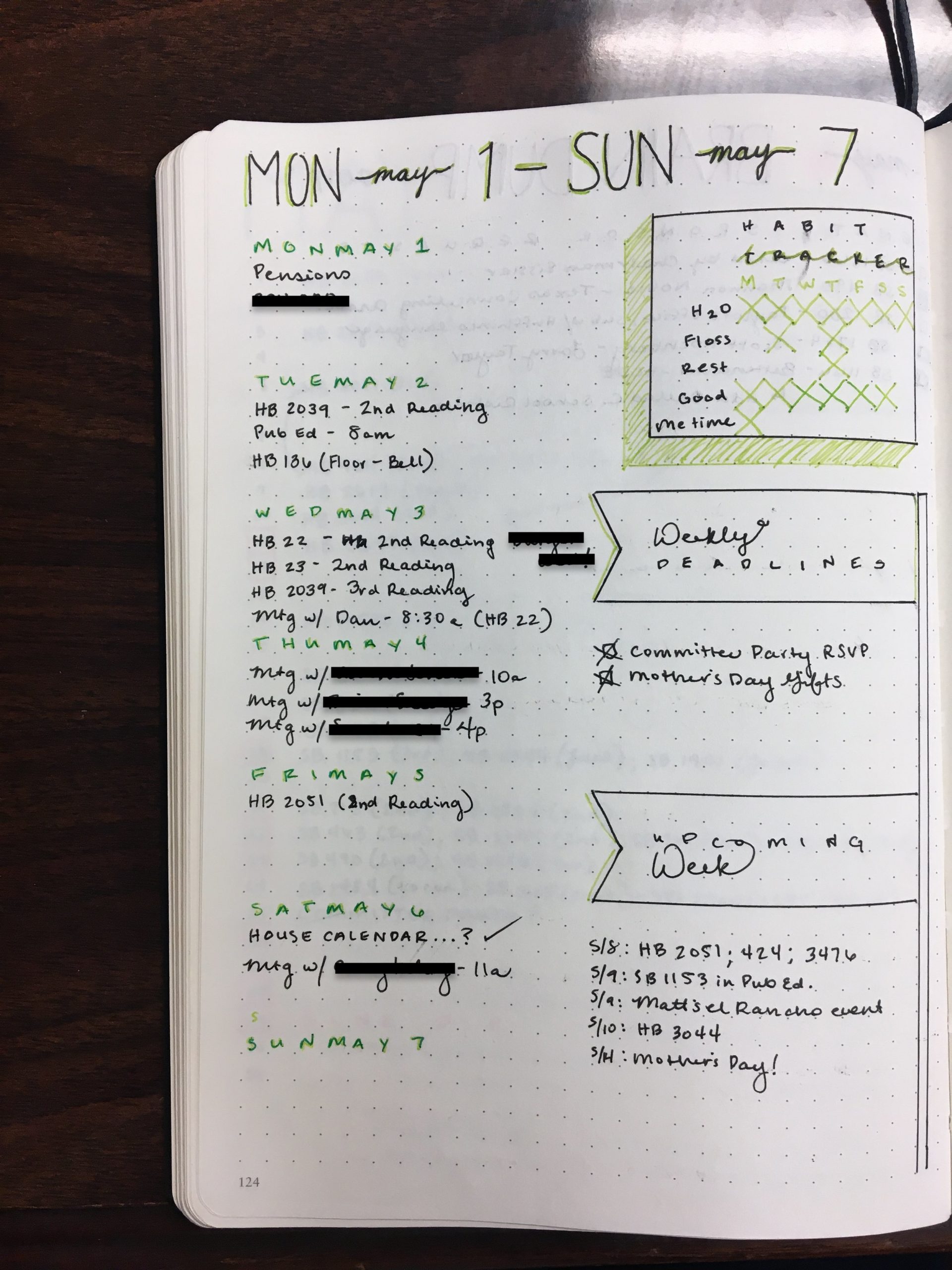
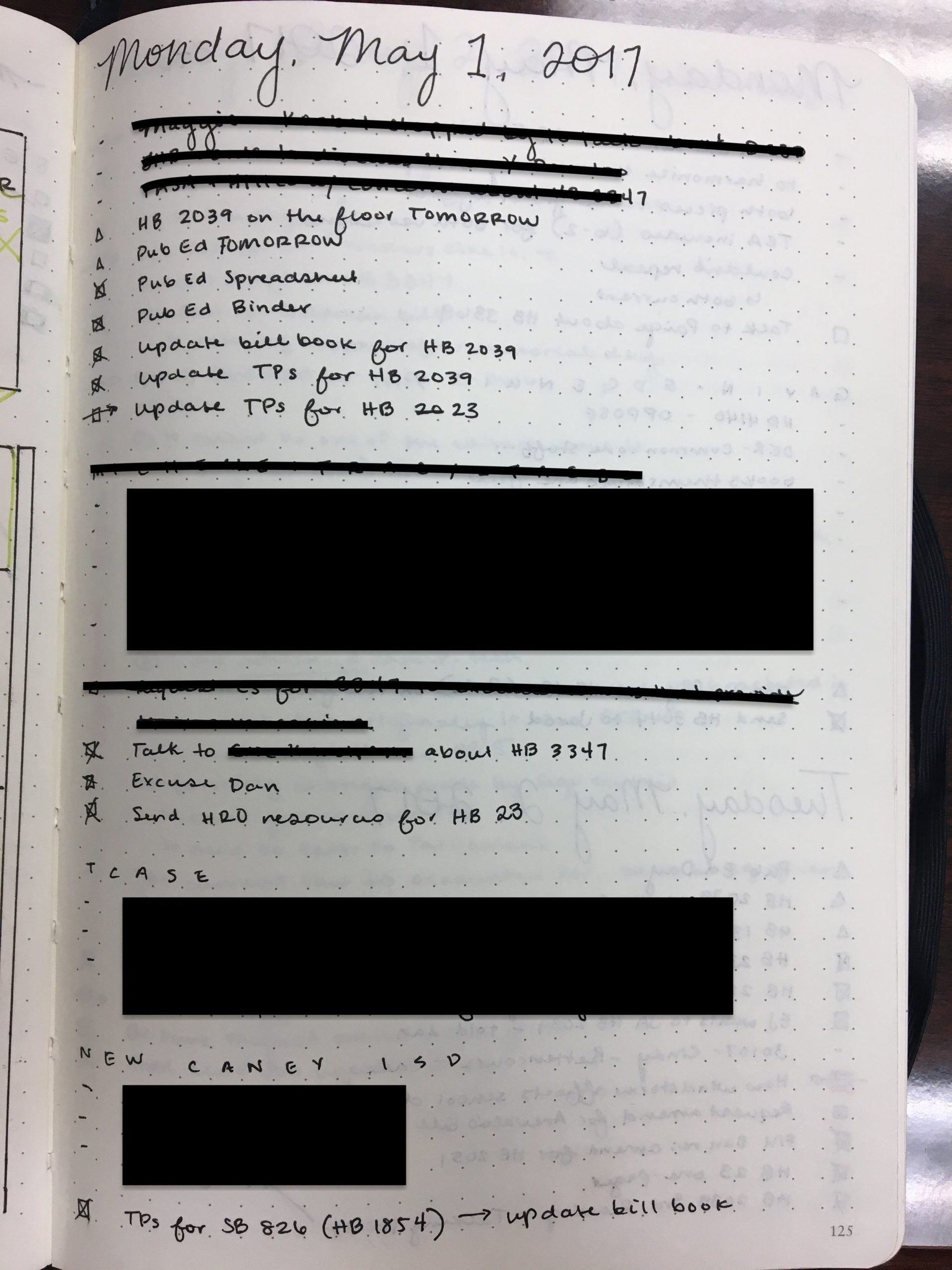
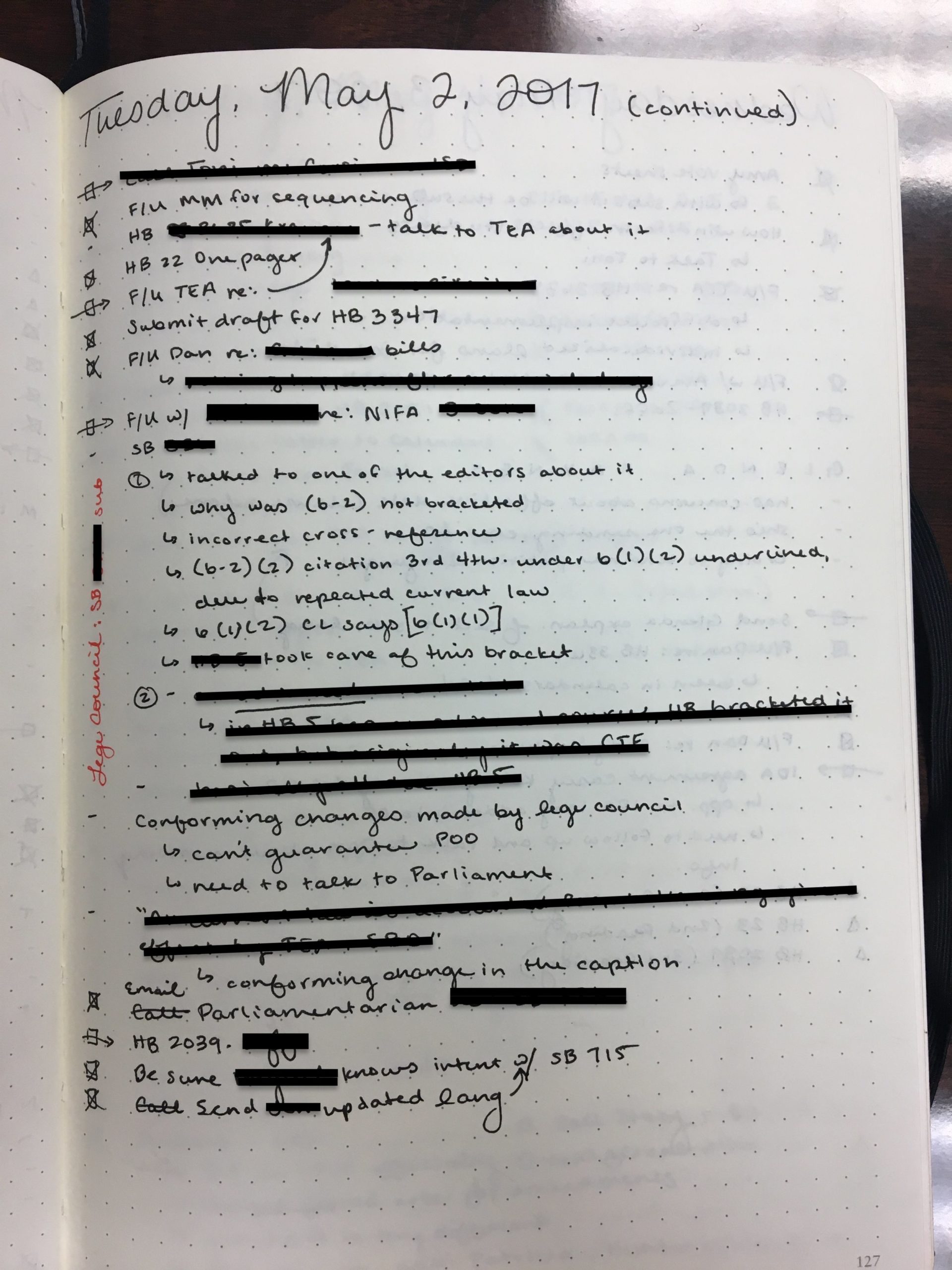
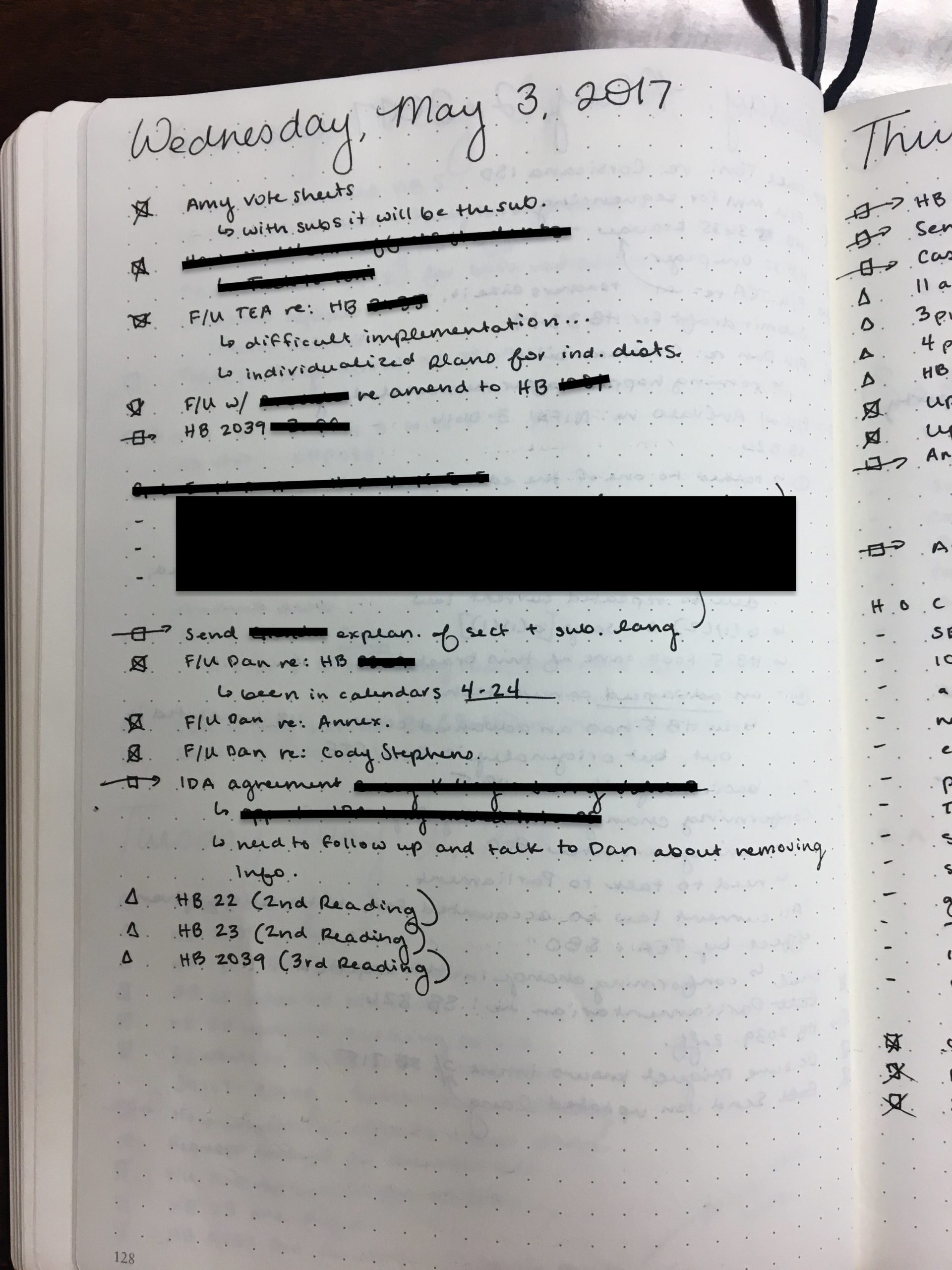
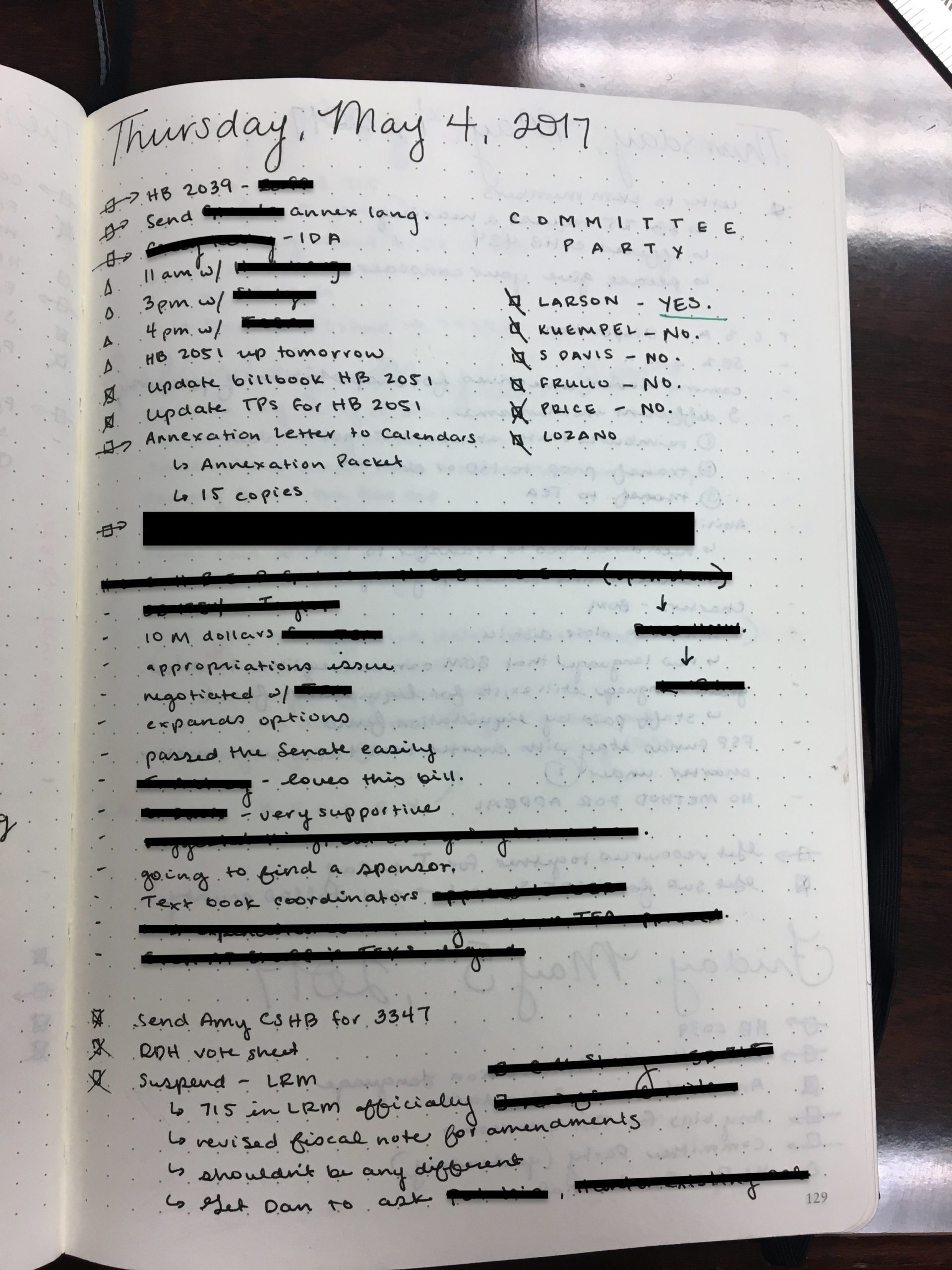


+ show Comments
- Hide Comments
add a comment